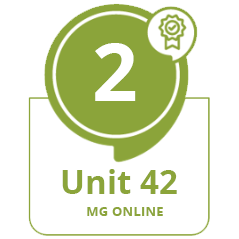Unit 42: Multimedia & Simulations


All of us are constantly surrounded by multimedia, all the time. It has become a hugely pervasive and important feature of modern life – for good and ill. Multimedia is also an increasingly important tool in education and, when the right kinds of multimedia are used in the right ways, it can provide tremendous benefits.
In this unit, we will learn about some of the features of multimedia and what role it can play in our classrooms. We will also learn specifically, how you can create your own multimedia resources that do exactly what you need them to do.
By the end of this unit you will be able to:


For this assessment, you are going to create and share your own animation OR screencast video built using the tool of your choice. Before you start, have a look at the rubrics that will be used to assess the quality of your screencast or animation so that you are clear about what aspects you need to focus on.


Badges & Points
There is a badge available on completion of the unit's lesson and assignment worth one (1) SACE professional development point.
Attributions
References
![]()
This unit on Multimedia and Simulations, part of the Teachers' ICT Integration Course by Matthew Goniwe School of Leadership and Governance is licensed under a Creative Commons Attribution-ShareAlike 4.0 International License with the exception of the following resources:
All content not licensed under a Creative Commons license is all rights reserved, and you must request permission from the copyright owner to use this material.